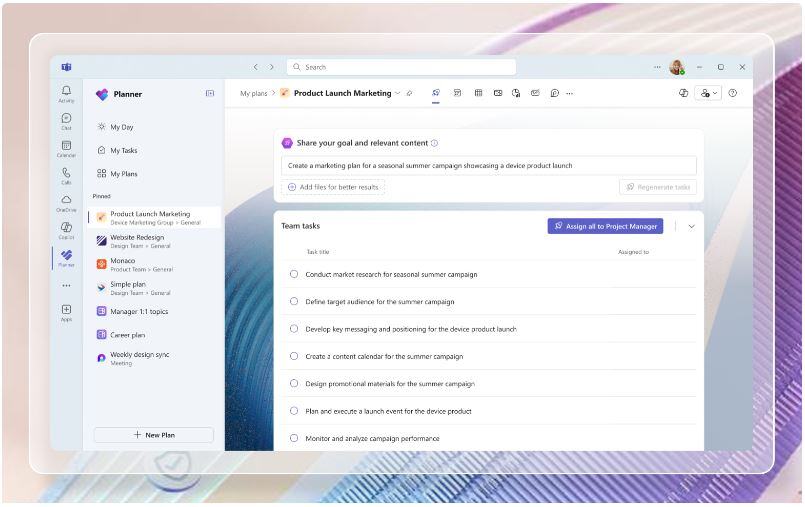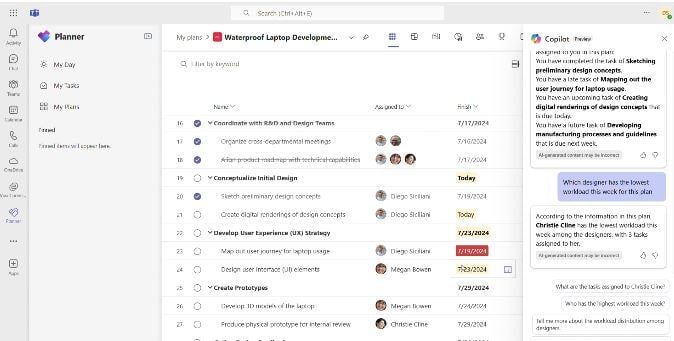Effective project management means you need to deliver consistent results with clarity, efficiency, and control. Yet, despite the tools and training available, most teams still struggle to keep projects on track. Plus, you can avoid common project management pitfalls.
| “Many organizations don’t finish projects on budget, and even fewer wrap them up on schedule. The cost of getting it wrong? Wasted resources, missed opportunities, and frustrated teams,” said Managing Partner Alex Rodov at Trusted IT Group. |
So what’s going wrong?
In this blog post, we break down the most common project management mistakes that derail timelines, blow budgets, and stall progress. More importantly, we show you exactly how to avoid them—so your next project stays focused, efficient, and aligned with business goals.
Top 7 Common Project Management Mistakes (and What You Can Do to Avoid Them)
Even the most experienced project teams hit roadblocks. (A study found that for every $1 billion invested in projects in the U.S., $122 million was wasted on poor project performance.)
What are some common pitfalls to avoid in project management? From vague goals to broken communication and mismatched tools, small missteps early on can snowball into major delays, rework, and budget overruns.
The good news? These issues are avoidable—if you know where to look.
-
1. Unclear Objectives (and Overall Scope)
The top project management mistake to avoid? Unclear objectives.
One of the fastest ways a project goes off track is by skipping the basics—clear goals and a defined scope. If your team isn’t aligned on what success looks like, the result is confusion, missed expectations, and endless revisions.
Vague objectives open the door to scope creep, where the project expands beyond its original purpose without anyone hitting pause to assess the impact.
|
How to Avoid It: Lock in the “Why” and the “What” Early Get your goals and scope locked down before work begins. Use SMART criteria to shape your objectives—each one should be specific, measurable, achievable, relevant, and time-bound. Then document the scope in detail: what’s included, what’s not, and how change requests will be handled. When new asks come up (and they will), route them through a structured review process. Every change should be evaluated based on its impact on timeline, budget, and resource capacity. No informal approvals, no gray areas. Clarity upfront prevents confusion later—and saves you from delivering a project no one actually signed off on. |
-
2. Ineffective Resource Planning and Management
Another one of the most common project management mistakes? Not thinking out your resource planning.
Nothing stalls a project faster than assigning the wrong people—or not enough of them. Rushing into execution without knowing who’s available, what skills are needed, or how long tasks will take is a recipe for burnout, missed deadlines, and budget overruns.
Many teams get caught off guard simply because they didn’t plan thoroughly or account for real-world limitations.
|
How to Avoid It: Plan with Precision, Not Assumptions Start with a detailed resource analysis. Look at your team’s current workload, skill sets, and availability before assigning roles. Use resource management tools to build a clear picture of who can do what—and when. Be realistic about timelines. Don’t build your schedule around ideal conditions. Factor in dependencies, approvals, unexpected blockers, and time off. Overestimate rather than underestimate. It’s better to finish early than scramble late. Strong resource planning helps you stay on track, deliver confidently, and avoid stretching your team too thin. |
|
Learn more about how how the right software can elevate your project performance: |
-
3. Off-the-Mark Estimations for Time and Budget
Overpromising on deadlines or underestimating costs doesn’t just create pressure—it sets your project up for failure. This is another one of the most common project management mistakes to avoid that we see.
When time and budget estimates are off, teams scramble, clients lose confidence, and deliverables suffer. Guesswork in planning leads to blown schedules, cost overruns, and missed expectations.
|
How to Avoid It: Ground Estimates in Reality Start with a clear understanding of project scope and complexity. Don’t go it alone—bring in your team to help assess how long tasks will take and what they’ll cost. Use past projects as benchmarks and build in buffers for unexpected issues. When it comes to budgeting, factor in resource costs, software, vendor fees, and overhead. Don’t just plan for the best-case scenario—plan for what’s likely. Communicate clearly with clients and stakeholders from day one. Set realistic timelines and keep everyone in the loop if things shift. Accurate estimates protect your delivery, your team, and your bottom line. |
Avoid Costly Project Mistakes with a Free Hands-On Hackathon
Tackle the root causes of project delays, budget overruns, and tool misalignment—starting with a no-cost, 3–5 day Proof-of-Concept Hackathon (valued at $10,000).
Get Started-
4. Weak Governance = Weak Results
Organizations that don’t value project management have 67% more of their projects fail. When no one’s steering the ship, projects drift. Without clear governance, teams fall into decision limbo, accountability gets fuzzy, and priorities shift without warning. Poor oversight opens the door to delays, budget issues, and misaligned outcomes.
|
How to Avoid It: Build Structure from Day One Set the tone early with a governance framework that outlines who’s in charge of what—and how decisions get made. Assign ownership for key areas, clarify reporting lines, and define escalation paths so nothing slips through the cracks. Make project monitoring routine. Use dashboards, weekly check-ins, and progress reports to keep stakeholders informed and flag issues early. Encourage team-level ownership too. When everyone knows their role and how their work supports the bigger picture, self-management improves and performance follows. |
-
5. Not Planning for Risk Management
Hoping nothing goes wrong isn’t a strategy. Skipping risk planning leaves your project exposed to delays, budget overruns, and last-minute scrambles. Too many teams treat risk as an afterthought—until it derails everything.
|
How to Avoid It: Identify, Prepare, Adapt Start by mapping out every potential threat to your timeline, budget, and resources—then rank them by likelihood and impact. Build mitigation plans for the high-risk items. That way, if something does happen, you’re not starting from zero. Risk management isn’t a one-and-done task. Revisit your risk plan regularly, especially when priorities shift or new dependencies surface. The earlier you spot an issue, the easier—and cheaper—it is to fix. Stay proactive. The best project managers don’t just react to problems—they’re ready for them before they show up. |

-
6. Poor Communication
When communication breaks down, so does everything else.
Missed updates, unclear instructions, and silence between check-ins can throw your project into chaos. It leads to confusion, duplicated effort, and growing frustration across the team.
|
How to Avoid It: Be Clear, Consistent, and Collaborative Set the tone from the start—define how and when your team will communicate. Use centralized tools to keep updates, tasks, and discussions in one place. Avoid information silos by making sure everyone has access to the same project details, in real time. Don’t rely only on chat threads or emails. Hold regular check-ins and give your team space to ask questions, raise concerns, and share ideas. Encourage open feedback and create a culture where all voices matter—not just the loudest ones. Clear communication keeps your team aligned, your timeline intact, and your project moving forward without surprises. |
-
7. Skipping the Software That Keeps Everything Together
Only 16% of companies make use of the right software solution as part of their overall resource management process for projects. Trying to manage complex projects without the right software is like building a house with no blueprint.
You end up juggling timelines, updates, and resources manually—creating room for missteps, delays, and lost visibility. Without a centralized system, project tracking becomes guesswork.
|
How to Avoid It: Choose Tools That Match Your Workflow Start by identifying what your team actually needs—task tracking, time management, portfolio oversight, or cross-team collaboration. Then choose a solution that supports those priorities without adding unnecessary complexity. Here are a few tools we recommend:
When your tools fit your process, execution becomes smoother, reporting becomes clearer, and everyone works with confidence. |
Avoid Pitfalls in Project Management—Get Expert Support from TIG
Mistakes in project management cost time, money, and momentum.
Struggling with missed deadlines, unclear scope, or disconnected tools? Trusted IT Group helps you avoid the most common project management mistakes—starting with a free, hands-on Proof-of-Concept Hackathon (valued at $10,000).
In just 3–5 days, your team will test real solutions in your environment—no guesswork, no risk.
Experience what’s possible. Book your free Hackathon today.







